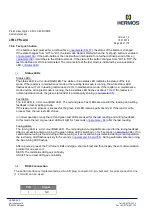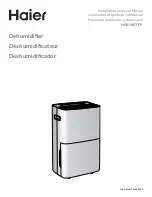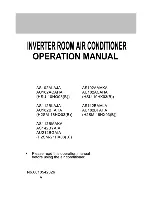
Protocol description ASCII, SECS/HSMS
Customer manual
Version 1.2
LFM LP Reader
15.01.2019
Page 36 of 119
HERMOS AG
Gartenstrasse 19
Tel. +49(9279) 991-0
D-95490 Mistelgau
Fax. +49(9279) 991-100
10. ASCI-I1 Communication protocol
The ASCI-I1 communication protocol defines a simple communication interface that is suitable for
exchanging messages between a HERMOS reader and a host. A host is a computer or computer network
that exchanges the information with the systems to carry out the production.
Serial communication:
On serial communication the ASCI-I1 message is transmitted with 4 bytes
checksum. The data is
transmitted or received as a serial bit stream with 11 bits per character in a supported data rate. A standard
character has a start bit, 8 data bits, a parity bit and a stop bit. An even parity bit is used for transmitting the
individual bytes.
Default setting:
19200 / 8E1
Ethernet communication:
On default the reading device functions as a server. This means that it waits for a connection request from
a HOST PC (client).
TCP/IP: IP-Adresse
xxx.xxx.xxx.xxx
Port 3241
After a connection is established, the ASCI-I1 messages defined in the message record are transmitted
from the reading device to the respective HOST and vice versa. On default settings ASCI-I1 messages are
transmitted without any
checksum. The connection remains intact until it is specifically terminated by the
host or the reading device.
All reading devices available in the network (LAN) can be operated from any HOST PC. A reading device,
however, can no longer be connected to more than one HOST simultaneously.
The network settings can be changed using a configuration tool provided by HERMOS. Each change to the
network settings causes the unit to reboot and thus disconnects existing communication connections.
Structure of the communication protocol
The communication is carried out via ASCII packets.
After each command to the reading device, a specific reply is transmitted. We recommend waiting for this
reply before transmitting a new command.
Packet content
Each message packet consists of a packet header (header = 3 characters), the message data (2 or more
characters) and the packet end.
Packet header
Message data
Packet end
















































